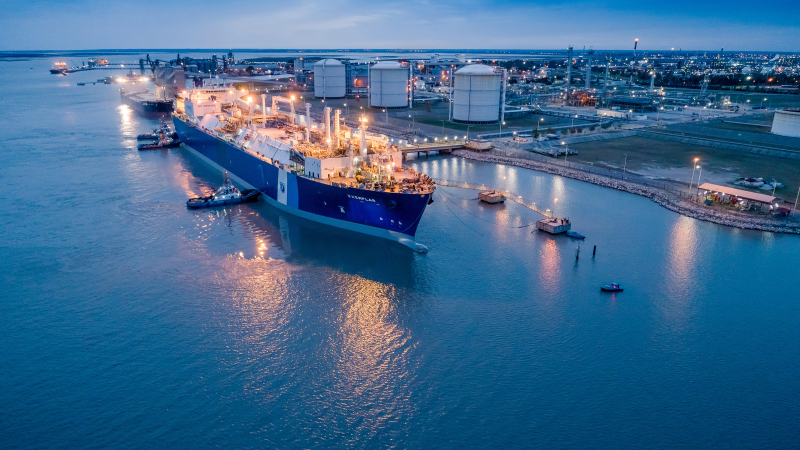Finland has chartered a floating liquefied natural gas (LNG) storage and regasification vessel (FSRU) from Houston-based Excelerate Energy to process LNG imports starting in Q4 to replace Russian gas supplies. Moscow cut off supplies on 21 May in response to payment disputes coupled with fallout from Finland’s NATO bid.
Excelerate, a US LNG company headquartered in The Woodlands, Texas, will deploy its FSRU Exemplar to the Baltic Sea region under a 10-year contract signed in Helsinki on 20 May with a subsidiary of Gasgrid Finland Oy in Helsinki, both parties announced.
The Exemplar will provide regasification services to southern Finland and to Estonia under a cooperation agreement signed on 4 May in which the two countries’ gas transmission operators agreed to lease the FSRU jointly. Finland is expected to bear, according to Reuters, 80% of the estimated cost at $487 million) of the decade-long rental, plus additional volume-used costs.
State-owned Gasgrid Finland and Estonia’s gas transmission operator Elering AS also agreed that the Exemplar would spend the winter in an Estonian port if port infrastructure in Finland was not completed in time.
“Elering’s vision has always been a unified Estonian-Finnish electricity and gas market,” the Estonian transmission operator’s CEO Taavi Veskimägi said in a statement on Elering’s website, adding that the Baltic neighbors have already spent nearly $1.1 billion constructing various links to tie their electricity and gas transmission systems together.
“The common LNG terminal is the next step … to ensure the security of supply for Estonian and Finnish consumers,” Veskimägi said.
According to Excelerate, the FSRU has 150900 m3 of LNG storage capacity and boasts a regasification capacity exceeding 5 Bcm per year. Gasgrid Finland added that the vessel at capacity represents 1,050 GWh of energy and that it would be loaded with LNG imports two or three times a month.
Baltic Sea Region Poised To Become a European LNG Hub
Gasgrid’s CEO Olli Sipilä said that while “leasing an LNG terminal vessel … ensures security of supply for gas supplies in both Finland and Estonia” other countries are also expressing an interest and “we see that there is a need for the terminal in the wider Baltic Sea region.”
Excelerate's Chief Executive Steven Kobos told Reuters at the contract signing in Helsinki that the FSRU’s 5 Bcm per year regasification capacity could cover a wider regional demand as it will “have much more left over” after “satisfying Finland and Estonia’s combined gas consumption.”
The announcement coincided with Finland's state-owned energy group Gasum’s notification that Gazprom Export would cut off Russian natural gas supplies on 21 May at 04.00 GMT, an action that followed Finland’s refusal to pay for gas supplies in rubles as Moscow had unilaterally demanded because of sanctions.
But as Russian gas stopped flowing, Gasum began importing natural gas through the bidirectional Balticconnector pipeline, which links Inkoo on Finland's south coast with Paldiski in Estonia and is supplied from Poland through Latvia and Lithuania.
On 1 May, Poland (which along with Bulgaria was also cut off from Russian gas supplies for refusing to pay in rubles) commissioned the GIPL (Gas Interconnection Poland-Lithuania) which links Warsaw’s LNG facilities to those in Kliepeda in Lithuania. Poland is actively sourcing long-term LNG supply deals, the latest of which involves Sempra LNG imports from Texas and Louisiana.
While Finland imported 90% of its gas from Russia, natural gas comprises only 5% of the country’s energy mix, according to the industry trade association Finnish Energy. Russia likewise cut off electricity to Finland, though with little effect considering the cutoff represented 10% of Finland’s consumption.


